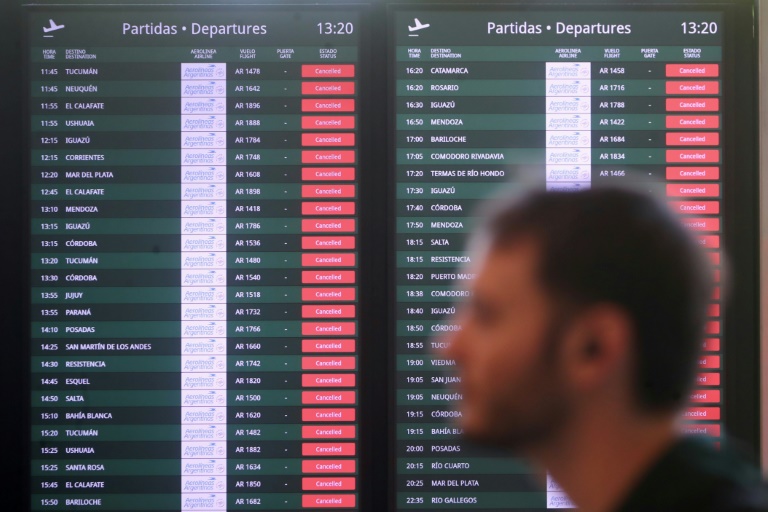On Wednesday, Argentina witnessed a major one-day strike that brought planes, trains, trucks, and taxis to a standstill, underscoring the rising discontent among the populace regarding President Javier Milei’s austerity policies. The strike was organized by labor unions in response to Milei’s controversial plans to privatize the national flag carrier, Aerolineas Argentinas, and to highlight the soaring poverty rates since he assumed office late last year. The impact was significant, with more than a million passengers affected and over 1,800 train services canceled, as reported by Trenes Argentinos, Buenos Aires’ state-owned rail operator. In addition, Aerolineas Argentinas reported that 263 flights were disrupted, causing inconvenience for approximately 27,700 passengers. The strike’s reach extended to metro drivers and ferry operators, who also joined the protest, while demonstrations led to roadblocks across various parts of the country.
The strike was a response to various austerity measures enacted by President Milei, known for wielding a chainsaw during his campaign as a metaphor for substantial cuts to government spending. Since taking office, he has implemented significant reductions in energy and transport subsidies and has cut thousands of public sector jobs. While these measures have helped Argentina achieve its first budget surplus in 15 years, they have also plunged the nation into a deep recession, prompting a sharp increase in poverty levels. Recent statistics reveal a gripping reality: the percentage of Argentines living in poverty has surged by 11 points in just six months, reaching an alarming 52.9 percent. This alarming trend highlights the acute economic strain faced by a considerable segment of the population.
Pablo Moyano, a prominent leader of the Confederación General del Trabajo (CGT), Argentina’s main labor federation, emphasized that the strike aimed to defend the “sovereignty” of the country’s transport sector. Moyano articulated apprehensions about the potential privatization of state-owned enterprises, reflecting concerns that these assets might be sold to foreign investors at underwhelming prices. This sentiment resonates with many workers, as the austerity measures implemented by Milei have exacerbated clear socio-economic inequalities and left a considerable number of citizens vulnerable. The labor unions have asserted that the strike not only serves their immediate interests but also stands as a broader denunciation of the government’s failure to protect its citizens from financial distress.
Another layer of complexity to these strikes is the fact that the main union of bus drivers did not participate in the Wednesday protests but announced plans for its own strike the following day. This represented a fractured approach among the labor unions, with different factions responding at varied junctures to the challenges posed by Milei’s policies. The subsequent planned strike by the bus drivers underscores the continual unrest among various transportation sectors, illustrating a wider and deepening discontent with the government’s approach. As the industrial actions unfold, the unions’ strategies appear aimed not only at immediate resistance but also at galvanizing larger segments of society around the broader implications of austerity.
The ramifications of Milei’s austerity measures extend beyond immediate economic impacts, as they also dwell on the ideological divide regarding the role of government in society. The administration’s focus on slashing public spending raises fundamental questions about the social contract and the responsibilities of the state towards its citizens. Critics argue that the economic benefits arising from a budget surplus are overshadowed by the human cost of rising unemployment, deteriorating public services, and an escalation in poverty. Consequently, the current political atmosphere is charged with tension, as those affected by these policies vehemently contest the leadership’s direction.
In an environment where inflation remains persistently high, with annual figures reaching 209 percent in September, the strains on the average citizen become increasingly pronounced. While there have been signs of inflation slowing, the overall economic stability is fragile, marked by mounting discontent and organized resistance. As protests evolve and the political landscape adjusts, the struggle between the Milei administration’s austerity drive and the vocal opposition from various unions and community leaders promises to shape Argentina’s immediate future. The unfolding events reflect a nation at a crossroads, grappling with issues of economic identity, government accountability, and the essence of social justice amidst widespread hardship.

